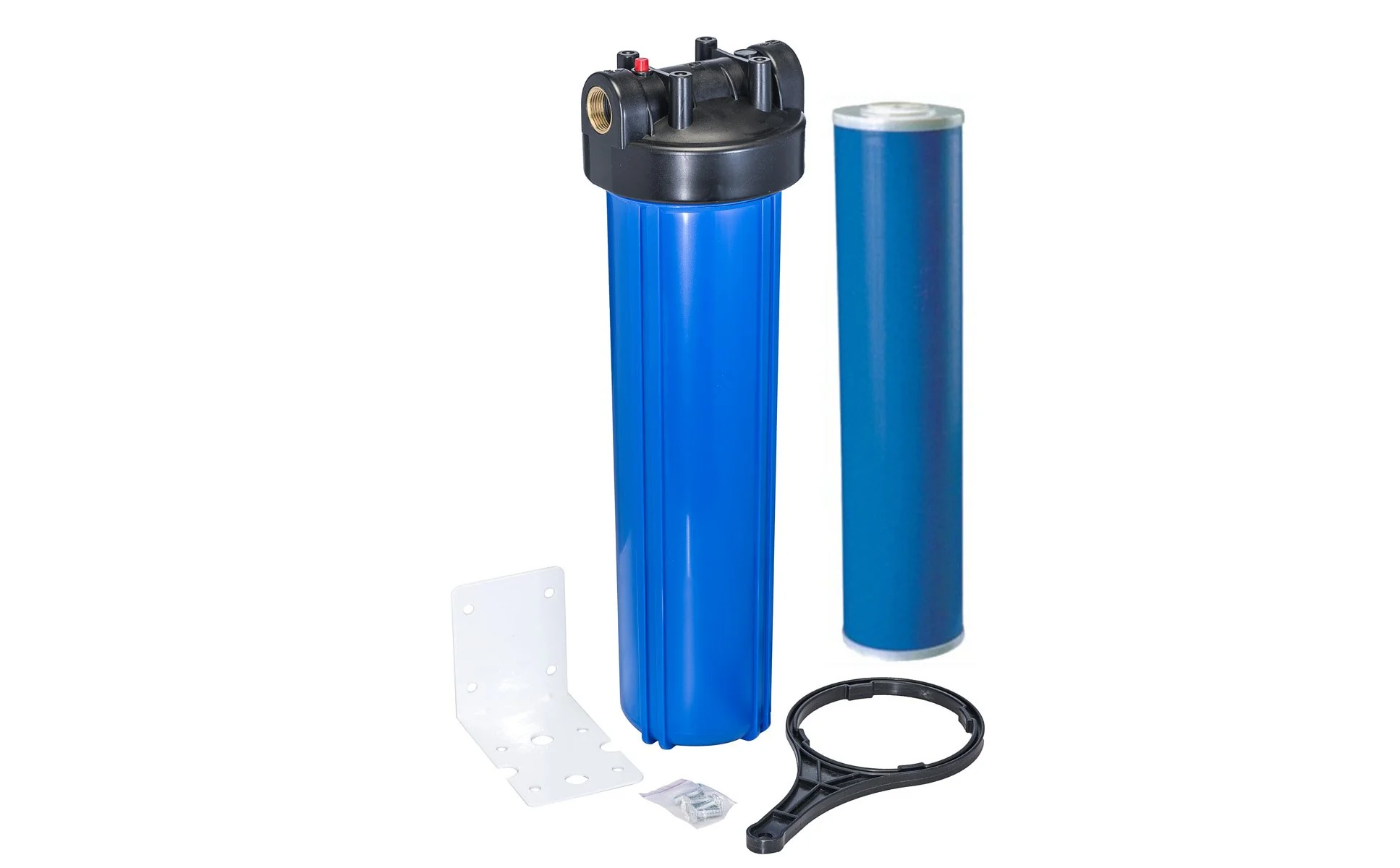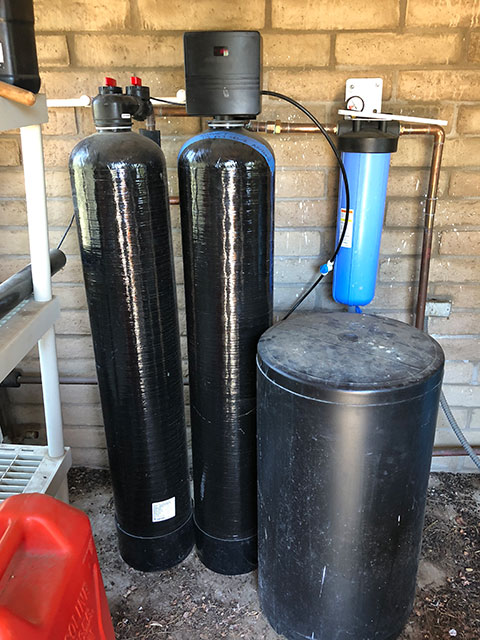What is a Whole House Water Filter and How Does It Function?
What is a Whole House Water Filter and How Does It Function?
Blog Article
We have stumbled upon this article about What are the Benefits of Using a Whole House Water below on the net and concluded it made sense to relate it with you on my blog.

Entire house water filters are the best option for people that want having a residence that gives tidy, drinkable water. In addition to supplying high quality drinking water throughout the house, a whole home water filter likewise offers benefits such as removing impurities that create identifying in water that is utilized to wash dishes. Unfiltered water can additionally create issue such as rusting plumbing and also home appliances, destroying apparel that is cleaned and tarnish sinks or showers. Although whole house water filters are usually utilized in residential houses, they can also be a reliable choice for apartments or workplaces.
At first, it might seem that entire house water filters would certainly be incredibly expensive when contrasted to other filter choices, but they are in fact a very cost-efficient option for water filtering. The price series of these water filters is large, beginning at two hundred bucks and setting you back as much as one thousand dollars. The rate of the filters is dependent upon their dimension, material as well as life span. This might seem like a very high rate, but when compared to other filter choices, it is in fact extremely inexpensive because of the amount of filtering system that it offers.
Entire house water filters cleanse water in the very same fashion that other filters, such as kitchen counter or under sink filters, do. The difference is that it needs just one filter, which is attached to the primary water resource, instead of requiring numerous water filters to be attached to various tools. As with the other filters, entire house water filters cleanse faucet water forcibly it through a number of various phases of filtration. One of the stages is carbon purification. Carbon is an effective method of filtering system water due to the fact that it is permeable and has the capability to eliminate small as well as big contaminations. Carbon is important in removing volatile organic carbon substances, which sometimes can trigger major damage to the liver, kidney or central nervous system. Carbon additionally gets rid of unsafe compounds such as pesticides, industrial solvents and insecticides.
An additional crucial action of the filtering process involves a procedure such as ionization or micron purification. This action eliminates hundreds of contaminants located in faucet water, and changes the water to excellent tasting, healthy alcohol consumption water. As stated previously, the primary advantage of entire home water filters are that they offer filtered water throughout the house with making use of just one filter.
An additional benefit of whole house water filters is the long lifetime that they supply. Much of these filters last in between fifty and one hundred thousand gallons of water. For many, the major negative aspect of entire home filters is the higher than average rate. Although these filters are extremely budget-friendly, they do require a huge financial investment up front. Entire home water filters can also require a substantial quantity job to set up.
How to Remove Iron Bacteria from Well Water
If your drinking water comes from a private well, you will likely experience issues with iron in your water. These issues can range from poor-tasting coffee to bright orange streaks in toilets and bathtubs. However, there’s an equally familiar but less understood problem linked to iron contamination: iron bacteria, also known as “iron-eating” or “iron-oxidizing” bacteria.
Iron is one of the most abundant minerals in the earth’s crust. As a result, elevated levels of iron are usually widespread in the groundwater that serves wells, often fostering the growth of iron bacteria in well water. These organisms can combine oxygen with iron, manganese, or other nutrients in the water to form a swampy sludge containing rust deposits, bacterial cells, and other organic and inorganic matter. This slimy residue then sticks the bacteria to pipes, pumps, plumbing fixtures, and appliances, causing clogging, foul tastes and odors, corroded pipes and plumbing fixtures, etc.
Well-water systems used infrequently or intermittently are typically more prone to iron bacteria problems. To make matters worse, removing these organisms from your water can be complicated, which is why we recommend taking steps to prevent them from forming in your well in the first place. Luckily, this article explains a highly effective way to remove iron bacteria from well water. Let’s start by discussing what iron bacteria are and how they get into well water.
Signs of Iron Bacteria in Water
If your household water supply is contaminated with iron bacteria, you might notice several unappealing signs that may indicate iron bacteria presence. These signs may include:
Stains and deposits on plumbing fixtures, pipes, and appliances
One of the most common indicators of iron bacteria in well water is stains and deposits on plumbing fixtures, pipes, and appliances. Water containing these organisms will leave rust-colored slime stains and deposits in sinks and toilets and inside well casings. You’ll also notice stains on fixtures, tableware, laundry, and various surfaces, that keep coming back no matter your cleaning method or efforts. These stains can be grey, yellow, or brown but are often a reddish-orange rust-like color.
Discoloration
Water containing iron bacteria can have a yellow, red, or orange hue. Further, visible deposits that have a clumpy or slimy consistency are very likely to have been caused by the presence of iron bacteria. Iron bacteria deposits are widespread in toilet tanks. In many cases, the deposits will take the form of a slimy coating along the walls of the tank. If the bacteria have been in the water for a lengthy period, the deposits could float in the water.
Oily sheen on the water surface
A quick and easy way to check for the presence of iron and other slimy-producing bacteria is to look in the water closet tank of your toilet. If you see an oily sheen on the surface of the water and can feel a slimy residue on the inside of the tank, slime-producing bacteria are likely present in your water system. If you use disinfectant in your tank, evidence of these conditions might not be so apparent.
https://www.springwellwater.com/how-to-remove-iron-bacteria-from-well-water/

I was guided to that article on Everything You Need to Know About Whole House Water Filter through a friend on our other web property. Please set aside a second to distribute this article if you appreciated it. We take joy in reading our article about What is a Whole House Water Filter and How Does It Work?.
Visit Site
Report this page